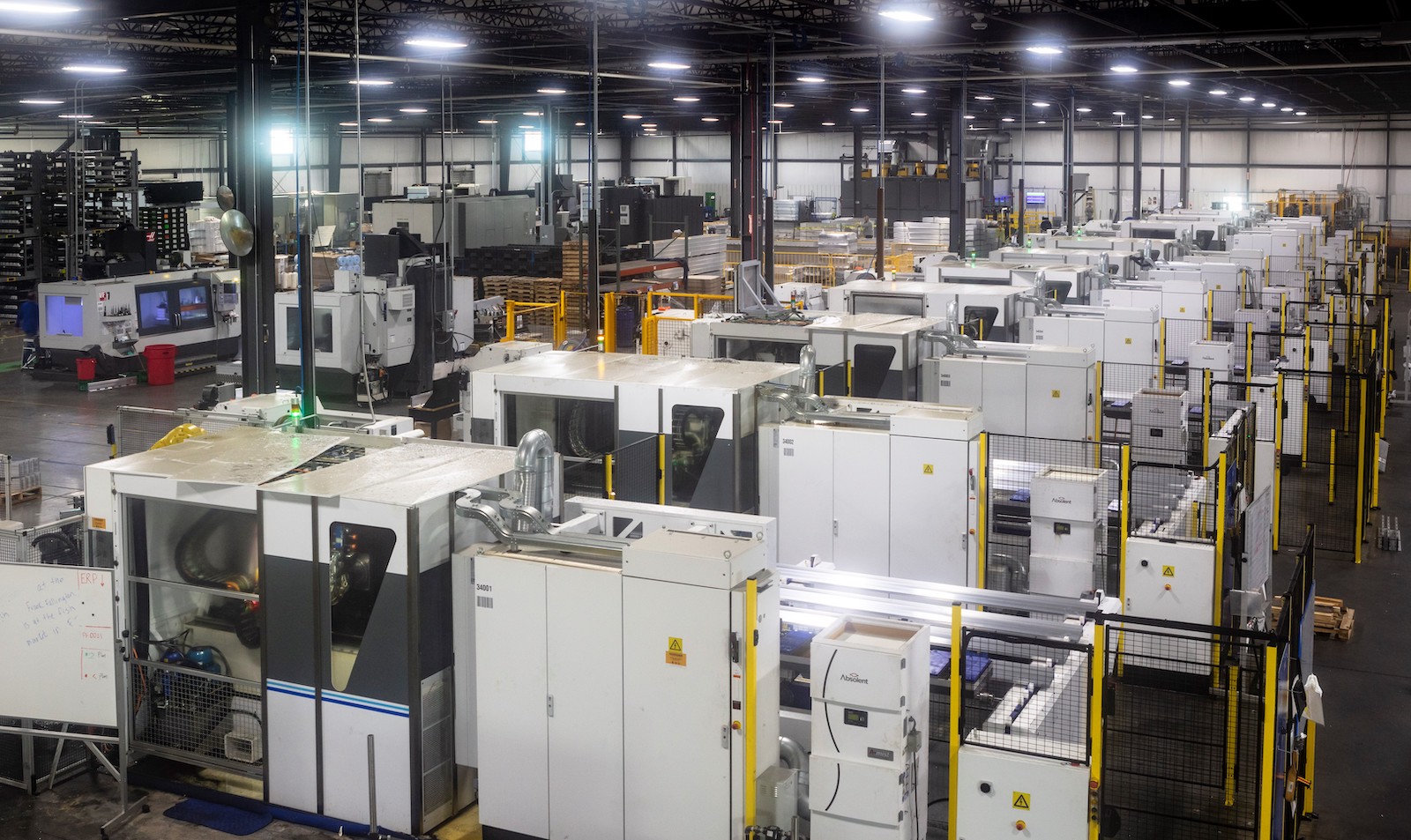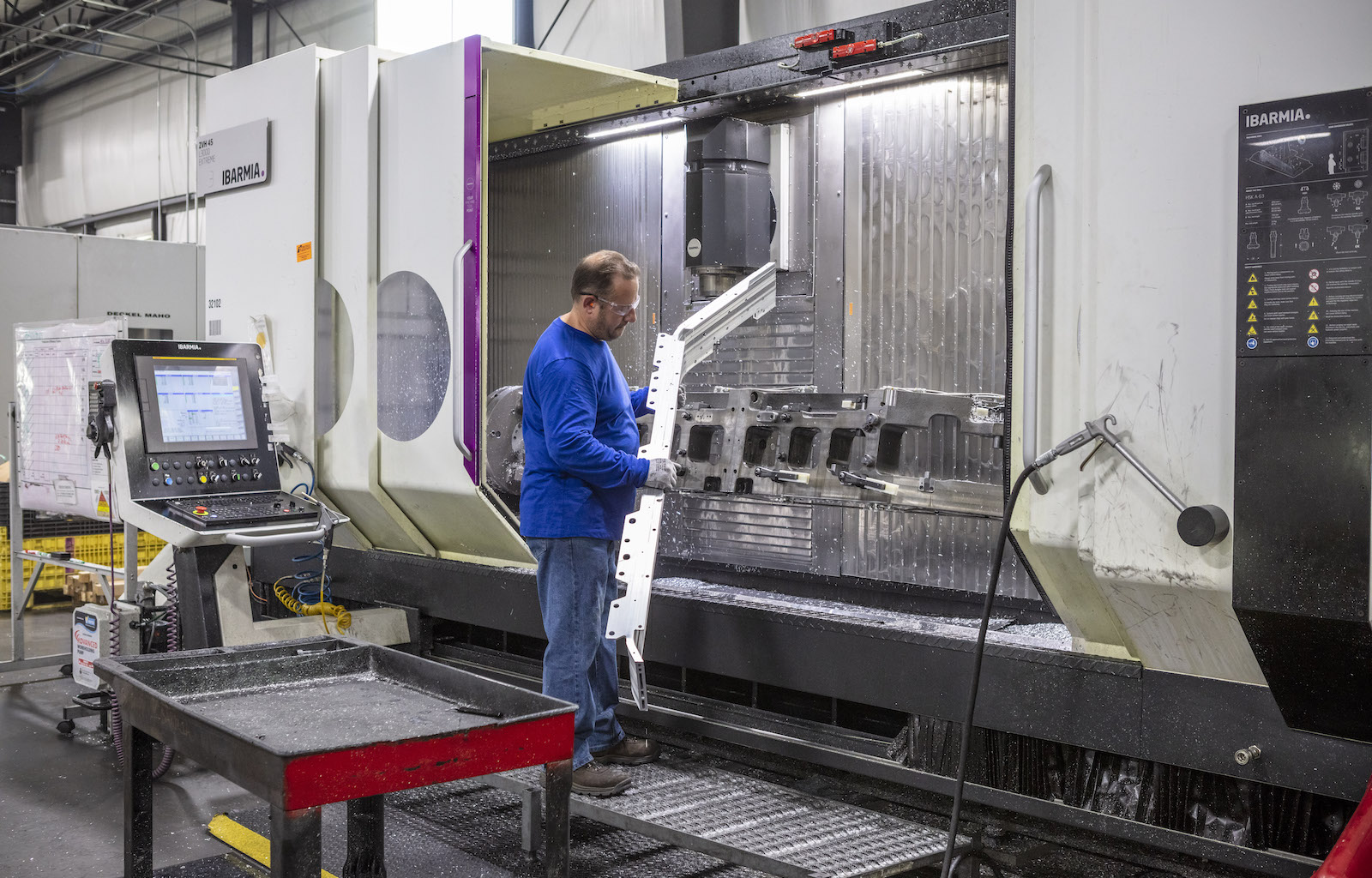By Mark Butterfield, Metal Exchange Corporation.
Editor’s Note: This is the fourth in a series of six articles in which the author will explore opportunities for the aluminum extrusion industry in the automotive market. The series will specifically address the supply chain, raw material supply, extrusion, fabrication, and assembly.
Demand for an Expanding Value Stream
Prior articles in this series have explored the opportunities within the expanding automotive extrusion market, looking specifically at OEM expectations, raw material supply, and extrusion capacity for the applications of today’s automotive demands. The advancements in fabricating and joining aluminum extrusions have expanded the automotive manufacturing landscape. OEMs designing today can now utilize highly recyclable, lightweight, high-strength, complex aluminum extruded components and assemblies. In doing so, they’re able to achieve significant weight reductions leading to improved fuel efficiency, increased range for electric vehicles, and enhanced overall safety and vehicle performance. The efficiency gained with aluminum extruded components assembled into full aluminum or multi-material assemblies continues to deliver a number of positive returns for OEMs. This ultimately results in loftier expectations and eventually drives the development of even greater capabilities in the machining and assembly of aluminum extrusions.
Due to these progressions in technology, capability, and understanding, an aluminum extruded solution for an OEM looks quite different today than just five years ago. They’ve transitioned from simple extruded lineals into highly value-added components (Figure 1) and/or multi-material assemblies that are utilized in many of today’s automotive systems (including crash, battery tray, suspension, structures, body, and heat management systems). With a current demand greater than 50 lbs per vehicle and additional growth set to nearly double by 2030, the expectation for completed components and assemblies does not stop at the extrusion press but amplifies with the demand of downstream value-added operations. The demand for suppliers of fully-fabricated components and assemblies is driving sourcing today and will continue to be a consideration in the years to come. Value is gained and understood as the aluminum extrusion industry continues to develop more complete value streams, providing these models and capabilities to the automotive market.

Opportunities Through Vertical Integration
Overall, vertical integration within suppliers provides OEMs with efficiency, flexibility, quality, and innovation within their supply chain. These advantages can result in cost savings, improved product quality, faster time-to-market, and an overall competitive advantage in the automotive industry. This vertical integration from raw material to extrusion, followed by fabrication and assembly, can provide multiple advantages for OEMs.
Cost Efficiency
By vertically integrating the supply chain, OEMs eliminate the costs associated with outsourcing and managing multiple suppliers over multiple processes. They can achieve economies of scale and have better control over development and production costs when a sourced supplier captures additional segments of the value stream (development, prototyping, raw material, extrusion, fabrication, coatings, and assembly). As OEMs continue to develop and utilize aluminum extrusions within their vehicles, the challenge is to maintain aluminum as the material of choice and extrusion as the process of choice, while preserving the margins necessary for sustainable growth. There are many levers to pull in this regard—consolidation of the value stream being one of them.
Product Quality and Performance
As a supplier incorporates downstream operations, the opportunities to reduce product variation increases through a managed process stream. For example, with greater internal control and understanding of the extruded product (input), a secondary machining operation can be optimized for machine cycle time, material stock and removal, finish, and overall tolerance capability. This begins with an optimized alloy and appropriate heat treatment cycle for efficient machining, chip generation, and finish capability. This advantage continues into developing additional capabilities beyond the stated tolerances of key features, thus affecting machining, assembly, and product performance, such as datums, hollows, and mating surfaces. In addition to conditions affecting part variation during downstream processes like twist, bow, and length, this internal control is understood at the time of engineering the downstream operations. This leads to the development of an appropriate, data-based tooling approach for improved manufacturing efficiencies, reliability, and product quality.
Faster Time to Market
There are many reasons OEMs need to launch quickly, including market competition, changing consumer demands or preferences, technology advancements, regulatory compliance, and brand image. While launching quickly is advantageous, OEMs must also ensure that the vehicles are thoroughly tested, reliable, and compliant with all quality standards. Understanding the aforementioned drivers and considerations, it’s easy to recognize that each day of development matters well in advance of start of production (SOP). In turn, the advantages of utilizing aluminum extrusions are even more pronounced—including shorter lead times, lower costs, and flexible tooling to revisions that help compress the aggressive timeline for advanced components and assemblies. As an inherent efficiency within the process this continues to derive value from grouping extrusion, fabrication, and assembly together, and allowing quicker development of downstream processes with no lost time between extrusion trials, fabrication tooling, and process development.
Challenges with Vertical Integration
The aluminum extrusion industry can understand the value of vertical integration and the benefits associated with fabrication and assembly. However, as the value stream expands beyond extrusion, some of the unique challenges associated with value-added processes also increase.
Diverse Fabrication Processes
Aluminum extrusion and fabrication are distinct manufacturing processes. Beyond extruding, fabrication can involve cutting, bending, welding, machining, washing, marking, heat treating, joining, and assembling extruded profiles into finished components or large, complex assemblies. Integrating these diverse fabrication techniques requires acquiring or developing the capabilities and expertise in each of the previously mentioned areas.
Capital Investment
Vertically integrating into fabrication and assembly often requires significant capital investment. Suppliers need to invest in additional machinery, equipment, tools, and automation for these unique fabrication operations (Figure 2) to support the ramp-ups, demand volatility, and overall volumes associated with automotive platforms today. This includes CNC machines, welding equipment, cutting tools, specialty labs, inspection systems, and assembly stations—often unique and dedicated to a specific OEM and application. The cost of acquiring and setting up these facilities can be substantial and often requires installations well in advance of SOP and stable production. With the surge in aluminum demand for the EV market, these investments have increased relative to product size, volume, and the associated risk with new platforms, technology, and some OEM startups.

Facility and Space Requirements
Integrating fabrication and assembly into an existing extrusion or greenfield facility requires significant floor space for the assets and material flow, while also supporting work in process (WIP) and packaging material, such as returnables, segregation areas, finished goods, and third party administrator (TPA) lanes. As the demand for larger components and assemblies (rockers, battery trays, crash management assemblies, etc.) increases, the manufacturing space necessary to support the larger value stream also increases, becoming a more significant factor when considering the layout and or specific type of work.
Skilled Workforce
Fabrication processes can require uniquely skilled labor with expertise in various techniques, such as welding, machining (Figure 3), and assembly. Aluminum extruders expanding their value streams need to recruit or train employees with the necessary skills to program, operate, and maintain today’s advanced fabrication equipment. As an industry, extruders know that identifying and retaining skilled workers can be challenging. This is particularly true in regions with a shortage of qualified labor. Often, the simpler part of expansion and growth is the equipment and facility purchase. Far greater difficulties lie in developing the talent to support and effectively and efficiently operate this equipment.

Quality Control
Vertically integrating fabrication into an extrusion plant requires expanding stringent quality control measures beyond what’s required for a simple extruded lineal. For the extrusion industry, the applications leveraging aluminum extrusions continue to expand into larger components and assemblies. This drives increased complexity regarding inspection, often requiring further investment into even larger specialized testing equipment to verify the product quality of the fabricated and assembled components. Furthermore, as components lengthen, the impact of straightness, flatness, and twist become more critical for machining, assembly, and product performance. Defects have the potential to be generated in the extrusion process, but can be amplified by the impact of material stresses, as the product develops through various machining and thermal processes.
Supply Chain Management
Integrating fabrication involves managing a more complex supply chain for additional components outside an extrusion to lineal process. Aluminum extruders may need to source additional materials, such as fasteners, gaskets, coatings, adhesives, or other components required for the fabrication and assembly process. Ensuring a reliable supply chain, coordinating deliveries, and managing inventory can be challenging, especially when dealing with multiple suppliers in addition to the core business of extrusion. Aluminum extruders must align their extrusion and fabrication processes to optimize production planning and scheduling. Balancing the production rates of extrusion and fabrication operations is crucial to avoid bottlenecks, inefficiencies, and/or defects associated with delays of material from one process to another, such as bending and heat treatment. Coordination between different manufacturing stages, such as extrusion output and fabrication capacity, is necessary to ensure smooth production flow.
Conclusion
Overall, OEMs expect the aluminum extrusion industry to provide lightweight, durable, cost-effective, and sustainable solutions that can contribute to their goals of producing efficient, high-performance, and environmentally stable vehicles. As an industry, extruders have responded to the concerns of capacity and the need for ongoing innovation and development. As a result, the aluminum extrusion industry has been rewarded with historical growth.
Successfully overcoming the previously mentioned challenges can enable aluminum extruders to vertically integrate into fabrication and assembly. This provides them with greater control over the entire manufacturing process and end product, expanded product offerings, and potentially increased market opportunities. However, careful planning, investment, and continuous improvement efforts are essential to mitigate the associated risks and maximize the benefits of vertical integration.
 With more than 30 years of experience in the aluminum extrusion industry, Mark Butterfield is currently president of Manufacturing at Metal Exchange Corporation, which includes the Pennex brand. An established industry leader, he also serves the Aluminum Extruders Council (AEC) in multiple positions, including that of vice chairman of the board of directors, chairman of the Automotive Committee, and vice chairman of Extrusion Technology 2024.
With more than 30 years of experience in the aluminum extrusion industry, Mark Butterfield is currently president of Manufacturing at Metal Exchange Corporation, which includes the Pennex brand. An established industry leader, he also serves the Aluminum Extruders Council (AEC) in multiple positions, including that of vice chairman of the board of directors, chairman of the Automotive Committee, and vice chairman of Extrusion Technology 2024.
Editor’s Note: This article first appeared in the August 2023 issue of Light Metal Age. To receive the current issue, please subscribe.
